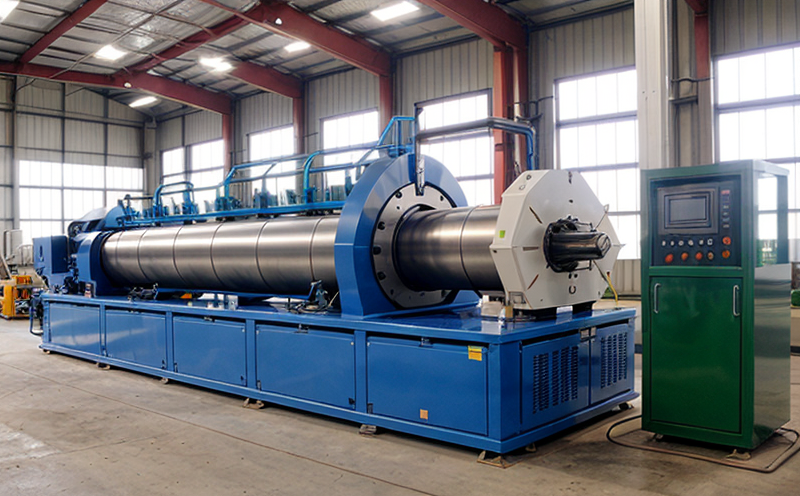ASTM E3300 Furnace Recovery Efficiency for Waste-to-Material Systems
The ASTM E3300 standard provides a method to determine the recovery efficiency of waste-to-material systems, which is essential in evaluating the environmental impact and economic viability of such processes. This service focuses on assessing how effectively different waste streams are converted into valuable materials through thermal treatment methods.
Thermal processing technologies like pyrolysis, gasification, and incineration play crucial roles in modern waste management strategies aimed at reducing landfill volumes while generating useful by-products. However, these processes must be optimized to ensure maximum resource recovery without compromising environmental integrity or operational efficiency. The ASTM E3300 furnace recovery efficiency test helps facilities achieve this balance.
The procedure involves exposing a defined sample of waste material to controlled temperatures within an industrial furnace under specific conditions. After the process is completed, the remaining ash and gases are analyzed quantitatively to determine what percentage of the original mass was recovered as useful materials or energy. This quantitative analysis forms the basis for evaluating the performance of various waste-to-material systems.
This testing method is particularly important in the context of circular economy principles where minimizing waste generation and maximizing resource utilization are key objectives. By providing precise data on recovery efficiencies, ASTM E3300 enables stakeholders to make informed decisions about process improvements, technology selection, and operational adjustments that enhance overall sustainability goals.
For instance, if a facility aims to improve its biofuel production from municipal solid waste (MSW), understanding the exact amount of organic matter converted into usable energy via gasification can guide investment in more efficient reactors or better feedstock preparation techniques. Similarly, when designing new recycling plants, knowing the baseline recovery efficiency allows for strategic planning around capacity expansion and integration with existing infrastructure.
Moreover, compliance with regulatory requirements often mandates regular monitoring of waste handling practices to demonstrate environmental stewardship. ASTM E3300 serves as a valuable tool in this regard by offering standardized protocols that ensure consistent results across different facilities and over time.
The test also aids in research and development efforts focused on developing next-generation conversion technologies. Researchers can use the data generated from ASTM E3300 tests to refine models predicting optimal operating parameters for diverse waste streams, thereby accelerating innovation within this rapidly evolving field.
In summary, ASTM E3300 furnace recovery efficiency testing is an indispensable component of effective waste management strategies aimed at achieving sustainable development goals. Its rigorous methodology ensures accurate measurements, enabling informed decision-making throughout the lifecycle of waste-to-material systems.
Benefits
- Quantitative assessment of recovery efficiency
- Prompt identification of performance gaps in waste-to-material systems
- Informed decision-making for process improvements and technology selection
- Enhanced compliance with environmental regulations
- Supports research and development initiatives aimed at improving conversion technologies
- Facilitates transparent reporting on sustainability efforts to stakeholders
- Promotes continuous improvement in waste management practices
Quality and Reliability Assurance
The ASTM E3300 standard ensures high quality and reliability through its detailed procedural guidelines. These standards are meticulously designed to minimize variability, ensuring consistent results regardless of the laboratory performing the test or the time elapsed between tests.
The method specifies exact parameters such as furnace temperature ranges, holding times, and sampling techniques which must be strictly followed by all participants. This uniformity guarantees that comparisons made between different facilities' performance data are valid and meaningful.
Furthermore, adherence to ASTM E3300 helps maintain consistency over time, allowing organizations to track trends in recovery efficiency accurately. Regular testing using this standard provides insights into the effectiveness of implemented improvements continuously, facilitating proactive adjustments to enhance operational excellence further.
The rigorous nature of ASTM E3300 ensures that only laboratories certified according to relevant ISO standards are entrusted with performing these tests. This certification process involves stringent quality assurance measures and regular audits conducted by independent bodies ensuring the highest levels of accuracy and reliability in all results reported.
Customer Impact and Satisfaction
The implementation of ASTM E3300 has a significant positive impact on customers by enhancing their ability to manage waste effectively. Through precise measurements provided by this standard, customers can ensure they are operating efficiently while meeting regulatory requirements.
By providing reliable data that reflects true performance metrics, ASTM E3300 fosters trust among stakeholders such as investors, regulators, and the public. This transparency supports responsible business practices and promotes sustainability initiatives aligned with broader societal goals.
The service offered under ASTM E3300 contributes directly to customer satisfaction by delivering actionable insights that enable continuous improvement in waste management processes. Organizations benefiting from these tests can demonstrate leadership in environmental stewardship, which is increasingly valued by consumers and other market participants.





